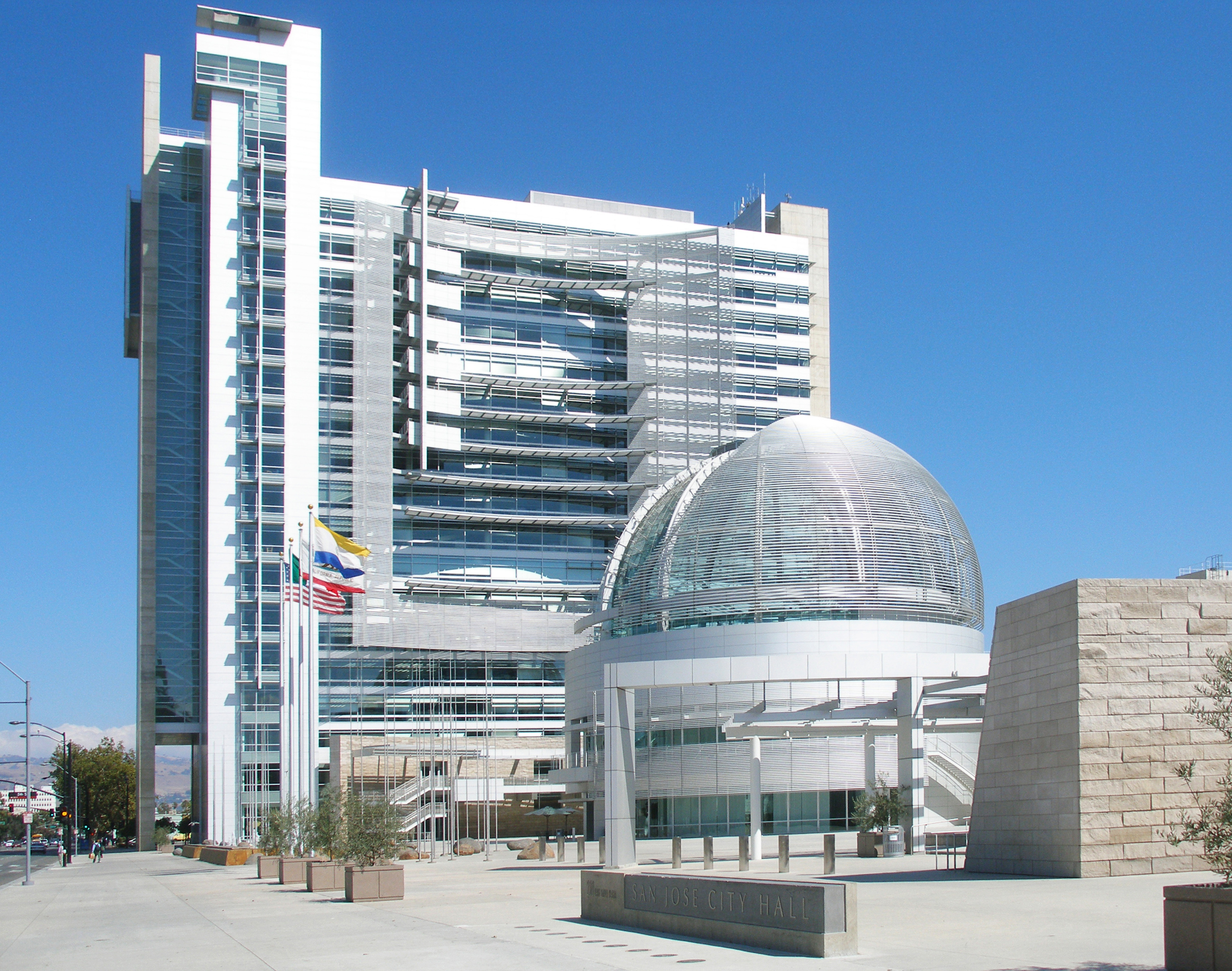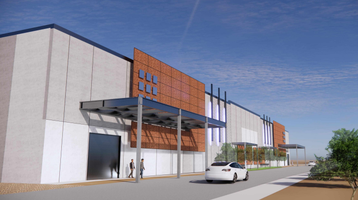Silicon Valley’s Bold New Blueprint: A Net-Zero Community Fueled by AI and Waste Heat
In San Jose, a radical urban experiment brings together big power, big data, and a big housing vision. But will it scale before rivals catch up?
On a quiet morning in downtown San Jose, the early buzz of construction equipment echoes through the shell of the century-old Bank of Italy building. Soon, this structure — once a relic of the past — will become a cornerstone of the future: a carbon-neutral residential tower, powered not by fossil fuels, but by the discarded heat of artificial intelligence.

The city, long defined by its proximity to innovation, is now preparing to live inside it.
On Wednesday, Pacific Gas and Electric Company (PG&E) and real estate developer Westbank unveiled two major milestones in their ambitious plan to turn downtown San Jose into one of the world’s first fully integrated net-zero communities. PG&E has begun infrastructure upgrades to deliver 200 megawatts of electricity to a trio of planned data centers. Westbank, in parallel, has issued a global call to identify partners to co-develop those data centers, whose waste heat will be channeled — not vented — to heat and cool up to 4,000 new residential units.
If successful, the project will redefine urban symbiosis: digital infrastructure powering human habitation, both literally and figuratively.
“This is more than a real estate play or a grid upgrade,” said one infrastructure strategist involved in the initiative. “It’s a rethinking of the city as a closed-loop system — where electrons, heat, people, and algorithms coexist.”
A Bold Marriage of Bits and Bricks
The project, dubbed the Silicon Valley Initiative, is no small undertaking. Anchored by PG&E's grid modernization and Westbank’s mixed-use housing and data centers, the vision is to create a resilient urban ecosystem. Data centers — notorious for their voracious appetite for electricity and cooling — will become engines of efficiency, feeding excess thermal energy into a district-wide heating and cooling system.
Table summarizing key aspects of District Heating/Energy, including its working mechanism, advantages, and applications.
| Aspect | Description |
|---|---|
| How It Works | Centralized heat generation, distribution via insulated pipes, and utilization in buildings. |
| Energy Sources | Fossil fuels, biomass, heat pumps, geothermal energy, solar thermal energy, waste heat. |
| Advantages | Energy efficiency, cost savings, environmental benefits, reliability, space saving. |
| Applications | Residential complexes, commercial buildings, industrial facilities, urban districts. |
| Environmental Impact | Reduces greenhouse gas emissions by using renewable or waste energy sources. |
This kind of circular energy logic is rarely implemented at scale in North America. In Europe, cities like Stockholm and Helsinki have flirted with data center heat recovery, but integrating it with affordable housing and next-gen grid upgrades in a tech capital is an altogether different proposition.
“This is more than slapping solar panels on rooftops,” one industry analyst noted. “The bigger picture is hardwiring sustainability into the city’s operating system.”
The three data centers, expected to go live in phases beginning in late 2027, will be flanked by thousands of housing units — a rare infusion in one of the nation’s most undersupplied housing markets. The first step? The revitalization of the Bank of Italy building, which will house 114 all-electric residential units, each embedded into the district’s energy loop.
Policy Meets Pragmatism: City Hall’s Green Light
Just 24 hours before the announcement, the San Jose City Council gave unanimous approval for the first two data centers. The speed and certainty of the vote surprised even some insiders.

“The demand for data centers is off the charts,” said Mayor Matt Mahan during the council session. “But convenience doesn’t matter if we destroy the planet in the process.”
Global data center energy consumption is set to skyrocket, with Deloitte projecting that power demands will more than double from 536 terawatt-hours (TWh) in 2025 to between 1,065 and 1,300 TWh by 2030, with the final figure heavily dependent on whether anticipated efficiency improvements materialize across the industry – representing one of the fastest-growing segments of global energy demand and highlighting the urgent need for both technological innovation and renewable energy integration to support our increasingly digital world.
That tradeoff — between economic growth and environmental stewardship — is precisely what the San Jose model aims to resolve. With artificial intelligence workloads exploding and real estate costs climbing, the city’s decision signals a pivot toward integrated planning as a strategy, not just a slogan.
City officials emphasized that the energy investments will benefit more than just the net-zero enclave. PG&E’s upgrades — including a rebuilt substation and enhanced transmission infrastructure — are also designed to support new rail lines and the wider electrification of homes and vehicles across San Jose.
Inside the Mechanics: How Heat Becomes Housing
At the heart of the project is a concept that’s deceptively simple: instead of letting heat from data centers dissipate uselessly into the atmosphere, capture and redirect it through a district energy system. That system then provides thermal energy to surrounding buildings, dramatically reducing the need for individual heating and cooling systems.
It’s not just greener — it’s cheaper. By leveraging recycled heat, residents and businesses connected to the network can expect lower utility bills. The plan also enables more efficient use of electricity, since energy isn’t wasted on redundant processes like re-cooling ambient temperatures inside server farms.
Yet the integration of such systems is notoriously complex. Heat recovery infrastructure must be tightly coordinated with building design, occupancy schedules, and weather patterns. And the financial model — balancing capital expenditures against long-term utility savings — requires sophisticated structuring.
Table summarizing waste heat recovery technology, its types, applications, and benefits.
| Aspect | Details |
|---|---|
| Definition | Capturing and reusing thermal energy lost during industrial processes. |
| How It Works | Identifies waste heat sources, captures heat, and converts it into useful energy. |
| Types of Systems | - Recuperators: Preheat air or fluids using exhaust gases. |
| - Regenerators: Temporarily store and reuse heat within the same process. | |
| - Thermoelectric Generators (TEGs): Convert heat to electricity. | |
| - Heat Pumps: Use waste heat for heating or cooling. | |
| - Heat Recovery Boilers: Generate steam or hot water. | |
| Applications | - Electricity generation (e.g., Organic Rankine Cycle systems). |
| - Industrial process heating and cooling (steelmaking, power generation). | |
| - Preheating combustion air for fuel efficiency. | |
| Benefits | - Energy Efficiency: Reduces reliance on primary energy sources. |
| - Cost Savings: Lowers operational costs by reducing fuel consumption. | |
| - Environmental Impact: Decreases greenhouse gas emissions and pollution. |
Still, for investors, the prize is tantalizing. “If they pull this off,” said one fund manager who specializes in green infrastructure, “it becomes the blueprint. Not just for California, but for how cities globally manage digital and physical convergence.”
First-Mover Advantage, or First-Mover Risk?
While the project has many admirers, some remain cautious. The underlying technologies — district heating, waste heat recovery, grid upgrades — are proven. What’s untested is their integration at this urban scale, and in the high-stakes terrain of Silicon Valley real estate.
“There’s execution risk across every vector,” said a consultant who advises on large-scale infrastructure projects. “Supply chains, permitting delays, interconnection queues — any of these could stall the timeline or dilute the impact.”
Table: Challenges, Risks, and Mitigation Strategies in Large-Scale Urban Infrastructure Projects
| Category | Challenges and Risks | Mitigation Strategies |
|---|---|---|
| Social | - Community disruption and relocation- Public opposition to project impacts | - Transparent communication and stakeholder engagement- Fair compensation for relocations |
| Environmental | - Climate resilience and extreme weather risks- Land contamination- Ground instability | - Use of green technologies- Thorough site investigations- Climate-resilient designs |
| Technical | - Design flaws and inefficiencies- Construction defects- Aging infrastructure | - Advanced modeling techniques- Stringent quality control measures- Modernization of systems |
| Financial | - Budget constraints- Cost overruns due to delays or unexpected changes | - Diversified funding sources- Contingency planning for overruns |
| Regulatory/Political | - Land acquisition disputes- Policy uncertainty- ESG compliance requirements | - Collaboration with policymakers- Streamlined approval processes |
And then there’s competition. Major utilities like Southern California Edison are experimenting with similar concepts. Tech giants — from hyperscale cloud providers to vertical real estate integrators — are circling the same space. Some, like Google and Microsoft, already operate carbon-aware data centers and could leapfrog this model by deploying proprietary versions inside their own ecosystems.

“The risk isn’t that the model fails,” the consultant continued. “It’s that someone with more scale and speed makes a better one.”
The Macro View: Markets, Momentum, and Meaning
From a capital markets lens, the PG&E-Westbank partnership is a case study in convergence: how infrastructure, ESG mandates, and digital transformation are creating new investable categories. The San Jose initiative, if replicated, could redefine urban asset classes — turning previously “wasteful” infrastructure into yield-generating utility platforms.
The numbers are compelling. The global data center market is projected to exceed $500 billion within the next five years. Urban housing, meanwhile, remains both a societal challenge and a financial opportunity. Net-zero communities, embedded with energy loops and intelligent grid management, represent a long-dated call option on both sectors.
And yet, the longer-term play may be reputational. For PG&E, still rebuilding trust after past crises, success here could reposition the utility as a 21st-century infrastructure leader. For Westbank, it’s a chance to export a new development model — one where density, digitization, and decarbonization aren’t tradeoffs but compounding benefits.
What Comes Next: Tipping Points and Trailheads
Later this spring, the first visible signs of construction will begin, starting with the Bank of Italy’s adaptive reuse. That will be followed by substation reconstructions, thermal loop infrastructure, and site prep for the first data center — which, if timelines hold, will come online by Q4 2027.

Investors will be watching every milestone. So will planners from other cities, who see in San Jose not just a local experiment, but a potential global prototype.
“It’s a moonshot,” said one energy markets analyst. “But the upside is, they’re not aiming for a single building or product. They’re aiming for a system. And systems scale.”
In an era of climate urgency, AI acceleration, and housing gridlock, perhaps nothing short of a system reset will do.
